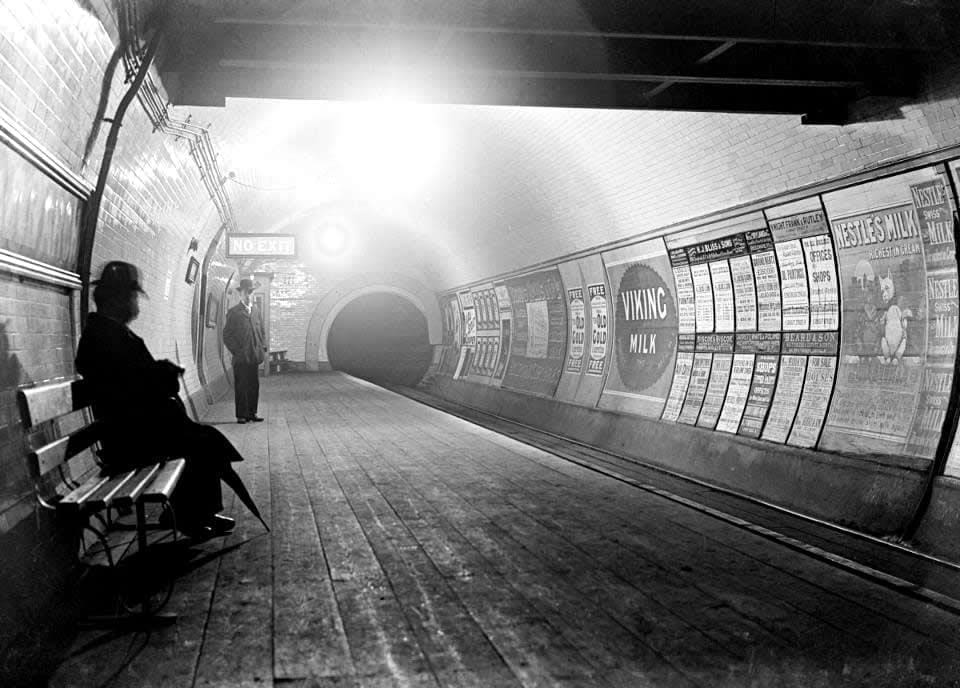Since its inception in 1863, the London Underground has become synonymous with the city and its landmarks, transport across the capital as well as the absolute silence on board any of its trains. To celebrate 161 years of this Great British institution, we’re taking a look at some of the key moments in the long history of the London Underground and how it got to the titan of public transport that it is now.

Dreamt up in the 1830s, permission for the world’s first underground railway system wasn’t given until 1854, and even then it took nearly a decade of building to get to anything that even slightly resembles the infrastructure we know now. It wasn’t until 10th January 1863 that the first journey was made, between what we now call Paddington Station and Farringdon Street which carried a gargantuan 38,000 passengers in one day.
From then, the Metropolitan District Railway was opened in 1868 and used steam locomotives to transport Londoners as far as Buckinghamshire once the Circle Line was completed in 1884, marking the first stage in the creation of the nearly dozen lines in use today serving the majority of the South East of England.
Enjoy more Heritage Railway reading in the four-weekly magazine.
Click here to subscribe & save.

Next came the era of electrification. 1902 saw the formation of the Underground Electric Railways Company of London, to finance what we now know as the Bakerloo, Hampstead and Piccadilly lines. This saw many of the operators move away from steam and towards electric as the 20th Century progressed.
What happened to the London Underground during the war?
The Underground also had a part to play during the two World Wars. Stations were used as air raid shelters in 1915, such was their safety and secluded positions. That being said the wars did delay the Central Line’s westward expansion to Ealing, until government-backed financial measures after the war allowed further expansion and the creation of the current Northern line. Again, the Second World War halted plans, this time for the Bakerloo line. Stations were again used as shelters but with safety problems; a siren test at Bethnal Green in 1943 resulted in a crush which killed 173 people, making it the worst loss of life in a single incident on the Underground.

In the 1970s and 80s, public transport responsibility turned to local government rather than central. Power transferred to the Greater London Council as opposed to the London Transport Board which was abolished. In 1979, the Jubilee Line was inaugurated in honour of Queen Elizabeth’s Silver Jubilee. Two years later, in 1981, fare zones were created which cut the average fare price before an increase following legal challenges, but this was mitigated by the introduction of the Travelcard and Capitalcard.
The London Underground today
The turn of the 21st century saw the formation of Transport for London, which oversaw drastic change to modernise the Underground. This came as the system was converted to a Public-Private Partnership to upgrade it, with the only responsibility of the Underground being to run the thing. New trains and e-tickets in the form of the Oyster card were introduced, as well as Overground and Crossrail services in the form of the Elizabeth Line. There was, however, tragedy in this period with the 7/7 bombings taking place, with three out of four attacks taking place on the Tube.
Nowadays, the Tube is responsible for over 3 million journeys per day, and a whopping 1 billion journeys annually. Not bad for something that started as a steam train carrying a public health risk.
Advert
 Enjoy more Heritage Railway reading in the four-weekly magazine. Click here to subscribe.
Enjoy more Heritage Railway reading in the four-weekly magazine. Click here to subscribe.




